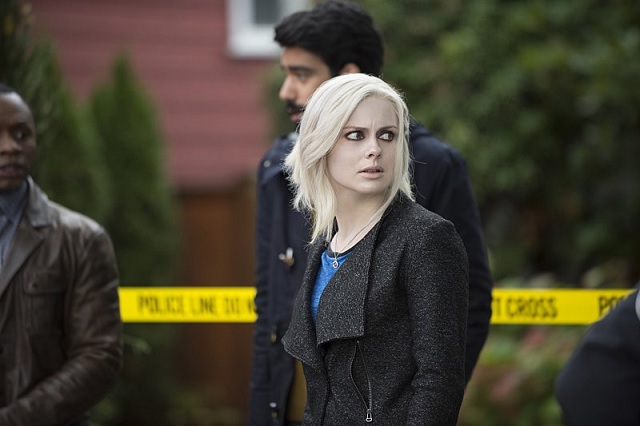
It is by complete surprise that I ended up with a copy of this movie. There I was, walking the aisles of my virtual movie store, looking for ‘The Empire of the Wolves’ when my clumsy fingers stumbled and clicked on Neil Jordan’s (The Crying Game, In Dreams, Breakfast on Pluto) film instead.
The result? Pure delight. I normally stay away from the 3 W’s: witches, wizards and werewolves, but I’m glad I took a chance on this. Based on the werewolf stories in Angela Carter’s short story collection ‘The Bloody Chamber’[1], this collection of gothic-themed tales was much scarier and darker than I expected it to be. Furthermore its release year (1984) and lead characters (Sarah Patterson and Angela Lansbury) lead me to believe that it was just another fantasy classic from the 80s, in the same vein as Time Bandits, Labyrinth and The Dark Crystal. In short, I was quite surprised by its content.



The opening scene brings us to the posh English countryside where Rosaleen’s (Patterson) family lives in an enormous Victorian mansion. Her character is isolated from the rest of the family and it seems to be by choice, although we never quite know why. In her bedroom we’re introduced to the myriad of toys that are strewn everywhere, a clever device used to illustrate her confinement. The first tale (four of them take place within her dream) begins a few hundred years back, to the death of her sister by a pack of ravenous wolves with glowing eyes. It’s pretty damn creepy, the way they quietly stalk her through the dark forest and eventually gang up on this innocent little girl. It’s worth noting that Jordan had very little to work with ($2 million budget), yet I would have assumed it was 15 or 20 million judging by the elaborate sets and visuals used.
The tales vary in tone but by and large remain sinister and spine-chilling. Terrence Stamp makes a cameo as the Devil, while another tale depicts a young Stephen Rea returning to his wife after a prolonged absence, only to transform into a vicious, blood-thirsty werewolf before her eyes. This was one of the highlights of the movie for me; I was actually wide-eyed and speechless the entire scene. It surprised me to see how far Jordan was willing to go, effect-wise, in order to convey his theme. In a beautifully horrific moment, Rea rips his hair, skin and muscle tissue off and slowly transforms into the goriest, most homicidal werewolf you’ve ever seen. It’s a sight for the eyes, I tell you.



Although the pacing is slow at times, Anton Furst (art director / production designer who would later work on Tim Burton’s Batman) makes sure that we’re visually rewarded with costumes and sets that truly represent the spookiness that the Victorian countryside provided. In many instances I was actually reminded of Labyrinth, in the sense that the atmosphere and music were quite similar.
I know that I mentioned the scariest parts of the movie as being the most memorable, yet, it’s not entirely a horror film. Actually, when it was distributed by Cannon Films in the United States, they wanted to market it as a horror film yet Jordan has always stated that it is not one. In fact, labeling it as such would be misleading to audiences, according to him.[2] I would highly recommend this movie to fans of the 80s fantasy-horror genre but for a more contemporary film that deals with the same themes, you should try and see Ginger Snaps (2000), a Canadian movie directed by John Fawcett which drew comparisons to David Cronenberg’s work.



[1] http://en.wikipedia.org/wiki/The_Company_of_Wolves
[2] idem
Myles of Dolphin



